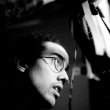|
|
 
|
|
Author
|
Topic: Question for our HAM friends (reguarding coax length).
|
|
|
|
|
John Hawkinson
Film God

Posts: 2273
From: Cambridge, MA, USA
Registered: Feb 2002
|
 posted 12-16-2002 01:11 PM
posted 12-16-2002 01:11 PM




It's neither necessary, nor a myth, Josh.
A lot depends on what frequency you're running at, and what kind of match you have, and how much you care about SWR (is ther an antenna tuner?), what kind of power you're running, etc.
Most people don't worry about it, and it is not a problem. But if you're matching two components in-phase (e.g. feeding a stacked pair of Yagis), then it is critical.
Tell us more about your application.
--jhawk
(KB1CGZ)
| IP: Logged
|
|
|
|
|
|
|
|
Oscar Neundorfer
Master Film Handler

Posts: 275
From: Senoia, GA
Registered: May 2000
|
 posted 12-17-2002 06:50 AM
posted 12-17-2002 06:50 AM





Josh,
If I recall correctly, as long as the terminating impedance (your antenna) is the same as the characteristic impedance of the coax, then line length does not matter except for loss considerations. However, if there is a substantial impedance mismatch between line and load (coax and antenna) the coax length can nake a large difference. Again this is from long ago memory, but I believe that as long as the coax is a half wavelentgh or multiples thereof, the impedance mismatch largely does not matter. But if you use a quarter wavelength, then mismatch gets very serious with high attendant losses due to high swr.
Now to go out on a limb, I think it is possible to get a low swr reading at one point in the coax, (the feedpoint right out of the transmitter for example) and still have a bad mismatch at the antenna/coax interface wich will result in high swr and poor power transfer into the antenna.
Also you can use the coax length to actually act as a transformer for the purpose of matching an antenna to the line. This however is very frequency dependent.
The ARRL handbook goes into a lot of detail on this. You may want to check it out. Also, if there are any guys out there with a strong background in transmission line theory, please correct me if I am wrong. I don't wamt to pass out incorrect information.
| IP: Logged
|
|
|
|
|
|
|
|
|
|
|
|
All times are Central (GMT -6:00)
|
|
Powered by Infopop Corporation
UBB.classicTM
6.3.1.2
The Film-Tech Forums are designed for various members related to the cinema industry to express their opinions, viewpoints and testimonials on various products, services and events based upon speculation, personal knowledge and factual information through use, therefore all views represented here allow no liability upon the publishers of this web site and the owners of said views assume no liability for any ill will resulting from these postings. The posts made here are for educational as well as entertainment purposes and as such anyone viewing this portion of the website must accept these views as statements of the author of that opinion
and agrees to release the authors from any and all liability.
|

 Home
Home
 Products
Products
 Store
Store
 Forum
Forum
 Warehouse
Warehouse
 Contact Us
Contact Us




 Printer-friendly view of this topic
Printer-friendly view of this topic






![[beer]](graemlins/beer.gif)


![[Smile]](smile.gif)
![[Wink]](wink.gif)



